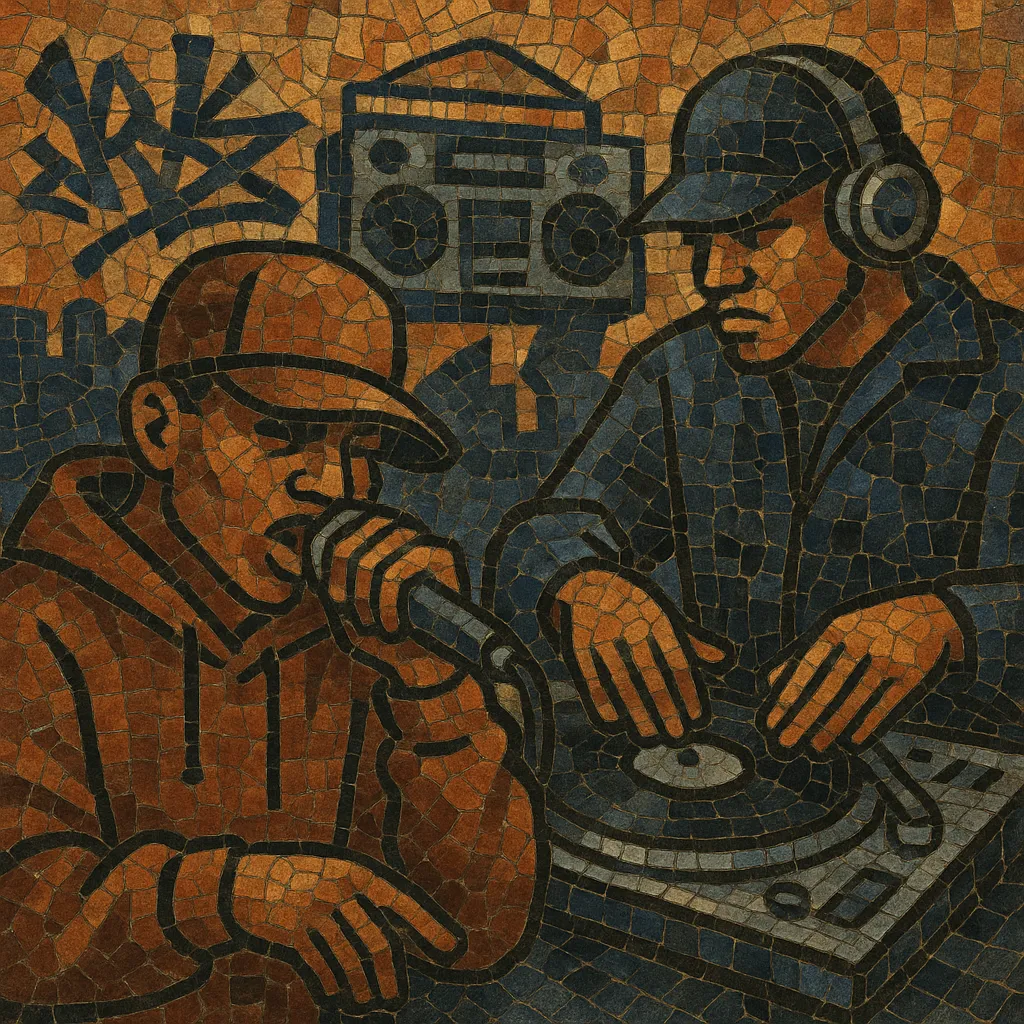
Mid-school hip hop refers to the transitional era between the early, party-driven old-school sound and the fully fledged 1990s styles. Emerging in the late 1980s and running through the early 1990s, it brought denser lyricism, political and social commentary, and a sample-rich, drum-forward production aesthetic that paved the way for golden-age and boom bap norms.
The sound is defined by chopped funk and soul breaks, SP-1200/MPC-style sampling, DJ scratching as a featured element, and MCs emphasizing internal rhyme, multisyllabic schemes, and battle-ready delivery. Crews and collectives (e.g., Native Tongues) helped normalize “posse cuts,” jazz-inflected beats, and Afrocentric perspectives alongside harder, more militant productions.
Mid-school hip hop coalesced in the late 1980s in the United States as a bridge between the party-rocking simplicity of old-school rap and the more advanced "golden age" creativity. Early innovators expanded beyond park-jam routines, using drum machines and samplers (notably the E-mu SP-1200 and Akai MPC) to flip funk and soul breaks into hard-hitting, loop-based beats.
This era elevated lyrical technique—internal rhymes, multisyllabic patterns, and intricate storytelling—while keeping the DJ’s toolkit central: scratching, cutting, and chorus “hook” cuts. Producers embraced dense, collage-like sampling and prominent breakbeats (e.g., James Brown-related drum breaks), making rhythm and texture the core of the sound.
On the East Coast, collectives and crews (Native Tongues, Juice Crew) and groups like Public Enemy and Boogie Down Productions pushed boundaries—politically, sonically, and technically. Simultaneously, battle/braggadocio traditions flourished alongside Afrocentric and socially conscious themes. This period laid the foundation for boom bap and jazz rap while influencing harder styles that would define the early 1990s.
Mid-school hip hop standardized the sample-driven, drum-forward production approach and the expectation of technical lyricism. It directly seeded boom bap, jazz rap, alternative/conscious movements, and the broader underground ethos of the 1990s, shaping hip hop’s global evolution.

